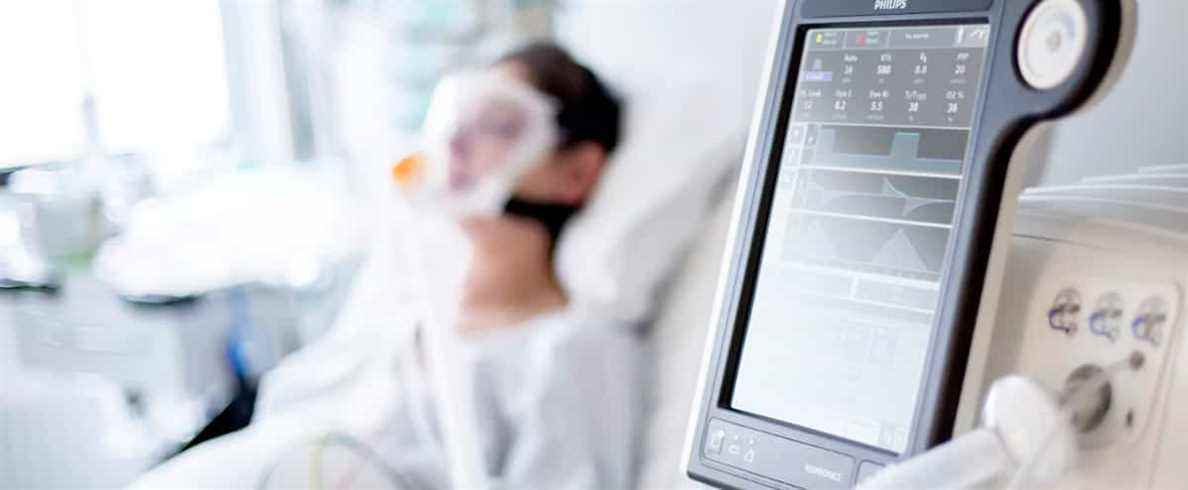The weight of the pandemic is particularly heavy in Montreal, where nearly half of Quebec’s intensive care patients who have COVID-19 are hospitalized.
• Read also: Grade “B” care, really?
• Read also: The health contribution is a logical solution
No less than 45% of patients hospitalized in intensive care who have COVID-19, or 119 out of 265, are in a Montreal hospital, show recent data from the Institut national de santé publique du Québec (INSPQ) and the Ministry Health and Social Services (MSSS).
This is almost double the population representation of this region at the provincial level, at approximately 25%.
“There is a lot of pressure, it comes out of our ears the cases of COVID-19”, insists the Dr François Marquis, head of intensive care at Hôpital Maisonneuve-Rosemont.
“These patients are not all there because of COVID-19, but they are still isolated in negative pressure rooms. The island of Montreal has the greatest burden”, also notes Dr. Germain Poirier, president of the society of intensivists of Quebec.
Far behind Montreal, the Estrie and Capitale-Nationale regions each have 21 patients positive for COVID-19 in intensive care, or 8% of cases.
At the peak of the first wave, in April 2020, Montreal managed 63% of intensive care patients across the province. However, at that time, certain hospitals were designated to receive infected patients.
Montrealers
Currently, the protocol requires hospitals to manage patients within their territory. Patients in intensive care in Montreal are therefore overwhelmingly Montrealers.
According to doctors, the population density in the metropolis partly explains the situation. Public transport, factories, apartment buildings: crowding increases the risk of spread.
“When you have a very contagious disease, densely populated places generate more contacts and more contagion. That’s why New York got more picked up [que les régions rurales] “, underlines the Dr Marquis.
Just a few transfers
As a general rule, all hospitals in Quebec have the capacity to care for patients with COVID-19 in their intensive care unit. However, some patients who require very acute care (including kidneys) must go to specialized centers, often in Montreal.
As for patients hospitalized with COVID-19, Montreal is once again the busiest region, at 36%, according to the INSPQ. Obviously, this pressure on the system has repercussions on the operating rooms, which have reduced their activities to a minimum.
Despite this, the Dr Poirier does not believe that Montreal patients should be sent elsewhere.
“If we transfer to the South Shore, when she wants to do her surgeries, she will no longer be able to do them. It’s undressing Paul to dress Jacques,” he thinks.
Under control
According to intensivist Michel De Marchie, the pressure will remain strong in Montreal until the end of February. He works at the Jewish General Hospital, where half of the patients in intensive care are not vaccinated against COVID-19.
“We are doing everything we can to keep intensive care under control,” he says. At the moment the system is very busy, but under control. »
– With Charles Mathieu
COVID-19 positive ICU patients
- Montreal: 119 (45%)
- Laval: 8 (3%)
- Outaouais: 7 (3%)
- Laurentians: 15 (6%)
- Lanaudiere: 11 (4%)
- Mauricie-Centre-du-Quebec: 13 (5%)
- National Capital: 21 (8%)
- Estrie: 21 (8%)
- Chaudiere-Appalaches: 15 (6%)
- Lower St. Lawrence: 2 (1%)
- Abitibi-Témiscamingue: 1 (0.4%)
- Saguenay-Lac-St-Jean: 13 (5%)
- North Coast : 1 (0.4%)
- TOTAL: 265
Source: INSPQ and MSSS Data as of January 20, 2022, several regions have no patients in IS
